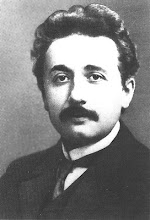If you want to reduce the size of an image yourself, there are several things you can learn to do on your own.
Change Picture Dimensions
The main way to shrink an image is to lower the picture dimensions. When I take a picture with my Canon EOS Rebel XSi, the dimensions for the photo are 4272×2848 pixels! That’s huge!
If I want to print the image, that resolution is great, but if I just want to email them to someone or view them on a computer screen, then you can adjust the dimensions to something more reasonable, like your current desktop width.
For example, if your resolution is set to 1280×1024, then you can adjust the max width to 1280.
You can usually go to your image editing program and choose Resize Image from the menu. You’ll then be able to adjust the width of the image:
Changing that value from 4272 to 1280 reduced the size of my image from 5 MB to 762 KB! That’s a significant difference. If you feel that 1280 is still too big, you can always go down to 800 pixels.
Change Image Resolution
Along with an image’s width and height, it also has a resolution. This is also called DPI or Dots Per Inch. On a computer screen, the max number of dots per inch is 72.
So if you are only viewing an image on a computer screen, you can change the resolution to 72. Lots of documents that are scanned by office or home scanners will use 150 or 300 DPI.Again, you can usually adjust this value when you go to the Image Resize option from your photo editor:
Of course, reducing the resolution will also reduce the size of an image. So it’s always best to change the resolution to 72 pixels per inch first and then adjust the width and height if the image is still too big.
Change Image File Type
Another option that can reduce the image size is to save it in a different format. For example, my 762 KB JPG file can be further reduced to 659 KB if I save it as a GIF.
Note that saving certain files as GIFs will make the pictures look grainer. Only pictures that don’t use a large number of colors will look the same when you convert them to GIF.Also, the opposite is true. Some GIFs will end up being smaller if saved as JPG files instead. So try saving the file into different formats and see your results.
Change Color Mode and Bits/Channel
Finally, you can convert an image to Indexed Color Mode instead of RGB or CYMK color mode, which can make the images much smaller.
However, the same issue applies here: pictures with a large range of colors will look like you are in Safe Mode in Windows! Going to Indexed Color mode is only useful if you have images with only a few colors, i.e. logos, banner ads, etc.
You can also change the bits/channel down to 8 Bits/Channel and that will most of the time not make any difference in how your image looks.
For my image, going to Indexed Color and 8 Bits/Channel further reduced the image size to 525 KB.
That’s pretty much all you can do to reduce the size of an image, so play around with the different methods and see what works best for you! Enjoy!
Subscribe to:
Post Comments (Atom)

No comments:
Post a Comment